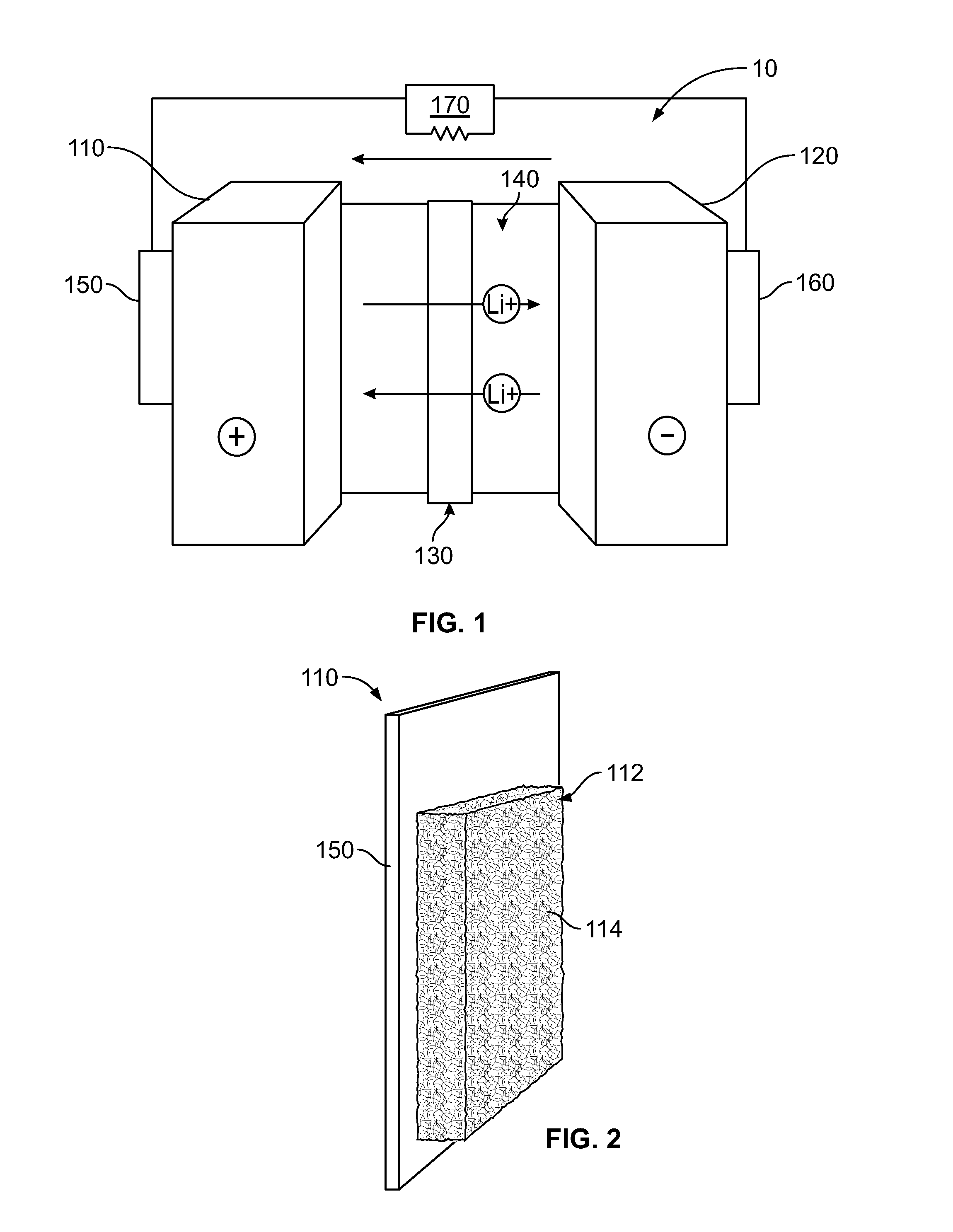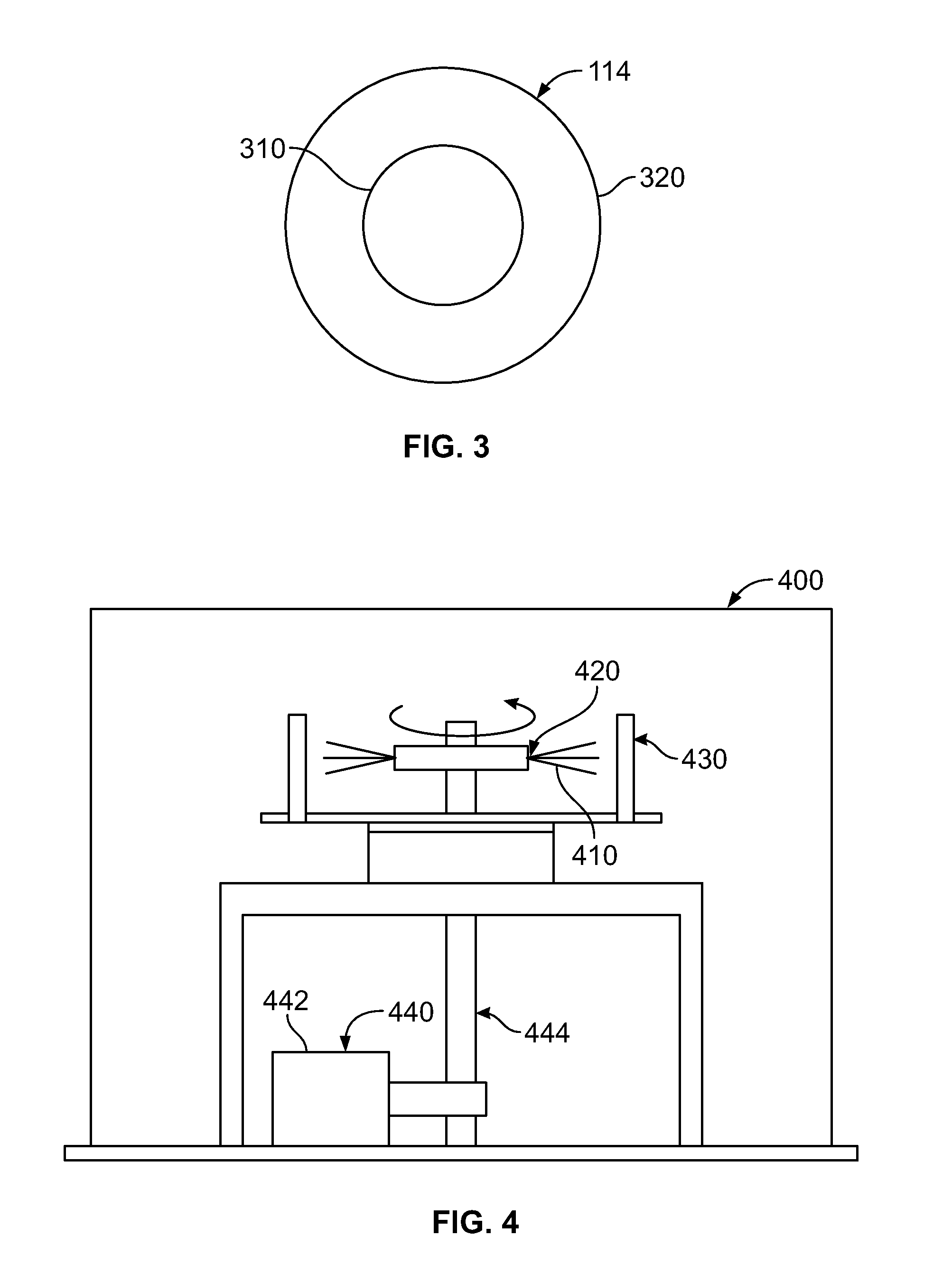Lithium battery cathode
- Summary
- Abstract
- Description
- Claims
- Application Information
AI Technical Summary
Benefits of technology
Problems solved by technology
Method used
Image
Examples
example 1
[0071]A core precursor solution was prepared using lithium chloride and manganese acetate in a molar ratio of 1.2:2, which then dissolved in a polymer solution of mixture of polyvinyl alcohol (PVA; 10 wt % in DI water) and polyvinylpyrrolidone (PVP; 20 wt % in DI water) A shell precursor was prepared by mixing zirconium acetate and PVP at 20 weight % in 2-propanol. The precursors were fed into the spinneret and spun using the fiber spinning technique described above. The initial experiments were carried out using outer needle (shell material) of 21 gauge and inner needle (core material) of 30 gauge. At rotational speed of 4000 rpm uniform and even coaxial ultrathin fibers were prepared. The fibers were then fired at 700° C. for 5 hrs. After the calcination, the fibers retain their morphology and high surface area. The fiber diameter was 2 to 3 microns in diameter.
PUM
| Property | Measurement | Unit |
|---|---|---|
| Temperature | aaaaa | aaaaa |
| Temperature | aaaaa | aaaaa |
| Diameter | aaaaa | aaaaa |
Abstract
Description
Claims
Application Information
 Login to View More
Login to View More - R&D
- Intellectual Property
- Life Sciences
- Materials
- Tech Scout
- Unparalleled Data Quality
- Higher Quality Content
- 60% Fewer Hallucinations
Browse by: Latest US Patents, China's latest patents, Technical Efficacy Thesaurus, Application Domain, Technology Topic, Popular Technical Reports.
© 2025 PatSnap. All rights reserved.Legal|Privacy policy|Modern Slavery Act Transparency Statement|Sitemap|About US| Contact US: help@patsnap.com



